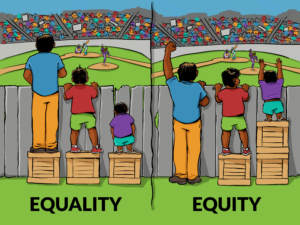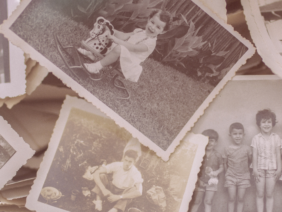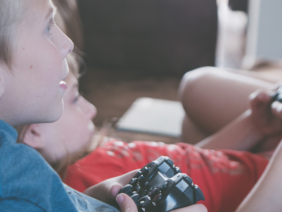
Making minority students more visible
By: Nimisha Jain
Globally, Canada prides itself on being a cultural mosaic, where people of diverse backgrounds, abilities, and stories are welcome and appreciated. As such, it is deemed a haven by immigrants seeking gainful employment, young students looking to embark on their lives, and families who want to settle down.
Recently, however, the world came face-to-face with the nation’s dark history when hundreds of unnamed graves of Indigenous children came to light. As such, one must delve into Canadian culture and evaluate how far the nation has come in terms of removing systematic barriers faced by students belonging to different equity-seeking groups. An equity-seeking group is one that faces systemic barriers to participating in society with equal opportunity, access, and resources due to discrimination or prejudice. Members of this group actively seek social justice and reparations. Examples of such groups include women, racialized groups, people with disabilities, and the LGBTQ+ community, among others.
Given the broad scope of this issue, we will focus on the barriers faced by Indigenous students in secondary and postsecondary education. We will recap the history of Indigenous students in residential schools and then discuss the long-lasting impact residential schools have had on how Indigenous students interact with the dominant education system today. We will also look at the various measures that educational and federal institutions have taken to overcome obstacles to create more diverse and inclusive atmospheres. Lastly, we will also review some further steps that can be taken toward the same goal.
What Does Equity Mean?
Before discussing these issues meaningfully, we must attempt to define what equity means. Tamtik and Guenter (46) found two fundamental approaches to equity in Canadian universities’ Equity, Diversity, and Inclusion (EDI) frameworks.
Equity as a notion of fairness: Some universities stated systemic power of some groups needed to be acknowledged while identifying the need to redistribute resources among groups. Equity for fairness allows for systematic change that can help every individual achieve their maximum potential (Clark 595).
Equity as notion of inclusion: A more popular view of equity within university EDI frameworks. This involved identifying and removing structural and informal barriers, biases and obstacles that limit access and opportunities for equity-seeking groups. It should be noted that equity as inclusion allows for organizational change, securing at least minimum success for each individual (Clark 595).

As someone eloquently explained to me, would a minority group, in this case, Indigenous students, want to be treated ‘equally’ or ‘fairly’?
Equality would mean that Indigenous students would be treated the same way as the dominant Euro-Canadian majority group who already have a huge lead. It would take generations for those disadvantages to being erased and put everyone on even ground. Fair treatment, on the other hand, accounts for historical inequalities and affords minority groups special boosts to compensate for leaving them behind for so long.
Indigenous Students in Residential Schools
We should start with an overview of what education has represented for the Indigenous peoples in Canada in recent history. From the 1870s, First Nations, Inuit, and Métis children were legally required to attend residential schools – these were boarding schools, often far from the child’s home. In contrast to Canada’s current stance on multiculturalism and integration, residential schools aimed to assimilate Indigenous children into the dominant Christian and Euro-Canadian culture. These children were not permitted to speak in their native languages, dress in traditional garb, or engage in their spiritual practices (Parks Canada Agency). Instead, they were forced to adopt Christian practices at school, relinquish their cultural practices and even dress the way the dominant culture dressed. There have been numerous reports of neglect; physical, verbal, and even sexual abuse in response to rule-breaking at these institutions.
Consequently, there were outraged protests from Indigenous communities, with the children covertly rebelling at school as well. Children stole supplies, did not comply with rules, ran away, and even set fires in defiance of the school authorities. . After years of protest, the Department of Indian Affairs took over the school system despite some resistance from the church, which did not wish to lose the controlling interest of the residential schools (Canadian Encyclopaedia).
Even as the Canadian Multicultural Act of 1971 adopted the ‘cultural mosaic’ metaphor and was later added to the Charter of Freedoms and Rights in 1988, the last residential school was only closed as recently as 1996. This highlights that residential schools were not part of an archaic system of a distant past but a very recent reality of large groups of people across Canada.
Quality of Education in Residential Schools
Not only were students grossly mistreated in schools, but the quality of education in residential schools was subpar due to a number of reasons. Some of these were curriculum-related issues – there were no set goals or standards for the education at residential schools; and the four r’s (reading, writing, arithmetic, and religion) were taught at a basic level, reflecting the belief of the inferior intelligence of Indigenous pupils. These lessons did not prepare students for life after school, nor were they of any interest or importance to them.
There were also staff-related issues – there were no minimum qualifications teachers needed to satisfy; they were often overworked, underpaid, and undertrained. The lack of proper education, inadequate nutrition, poor conditions of living (for schools were often overcrowded and not heated well during winter), and psychological trauma of forced assimilation and separation from family all left the young Indigenous person lacking skills required at home or in the broader labour market (Canadian Encyclopaedia). Naturally, after living through such trauma, there is mistrust among Indigenous peoples toward the federal government and Western culture in general, which may lead to reluctance to send their children to European-style traditional classroom-based schools.
The Federal Government’s Response
In 2007, the Truth and Reconciliation Commission (TRC) was created to “facilitate reconciliation between former students, their families, their communities and all Canadians” (Government of Canada par. 2). In 2008, a formal apology to all Indigenous peoples was issued by former Prime Minister Stephen Harper. The Prime Minister acknowledged the TRC report and the indisputable, profound, and lasting damage done to Aboriginal culture and communities. The TRC also started the momentous mission of healing and moving forward together, noting that:
“…[healing] requires an understanding that the most harmful impacts of residential schools have been the loss of pride and self-respect of Aboriginal people and the lack of respect that non-Aboriginal people have been raised to have for their Aboriginal neighbours. Reconciliation is not an Aboriginal problem; it is a Canadian one” (TRC v-vi).
Indigenous Communities in the Post-Residential School Era
As schools were the instrument of betrayal and loss in these communities, schools must be the source of reconciliation. Ramifications of the residential school era have cascaded through the years, resulting in the overrepresentation of Indigenous people in crime statistics as both victims and perpetrators. Indigenous women are thrice as likely as non-Indigenous women to be victims of violent homicide and domestic abuse. Reflecting the same trend, Indigenous youth are also overrepresented in custody.
Members in these communities are also likely to live in overcrowded housing with sporadic access to clean drinking water. National and provincial trends have shown that a large proportion of Aboriginal students between the ages of 12-18 tend to leave school before completing their education and there is a 40% dropout rate above the age of 15, significantly higher than the 13% dropout rate of non-Aboriginal students. There are a few reasons why the dropout rate is so high. First, there may be backlash from one’s own community – there is sometimes scorn in the face of being perceived as less ‘Indigenous’ as one gains more Eurocentric formal education. It is also understandable that living in a community and witnessing and/or experiencing issues like domestic abuse or substance abuse would contribute to high school attendance attrition.
Why Do Indigenous Students Drop Out of School?
There are also many systemic issues at schools that lead to Indigenous students dropping out prematurely. Research indicates that students feel alienated at traditional schools and experience racism at the hands of their peers or even their teachers. They report being ‘written off’ by some teachers (Zinga 1090). Being dismissed by teachers and peers can trigger a self-fulfilling prophecy (a phenomenon whereby negative opinions held against a person by a group actually serves to create that behaviour). So if a student perceives that the teacher does not think highly of them, this may harm their self-confidence or desire to work hard, leading the student to underperform and reinforce those negative beliefs held against them.
In such cases, students described their resilience being bolstered by meeting friends, teachers, and staff who had either shared similar experiences or had some knowledge of Indigenous culture and realities. Even so, they are faced with more systemic issues.
Battiste (159) argues that Canadian education institutions are “patriarchal and Eurocentric”, being “culturally neither fair nor neutral”. Thus, these institutions are locked in a self-perpetuating cycle which indoctrinates normative or mainstream beliefs and ideologies. In doing so, they simultaneously devalue beliefs, ideologies, and people that do not fit the mainstream mould. As such, Indigenous students report feeling culturally isolated and discriminated against on campus (Bailey 1267).
Additionally, provincial schools sometimes charge First Nations students out-of-province tuition, which is typically twice the tuition paid at First Nations schools. Financial pressures also contribute to the high dropout rates (Walton et al. 435).
Similar patterns are noted in postsecondary education, with fewer Aboriginal persons having completed a university degree, with a higher rate of dropping out (Hamilton et al. 433). While the Indian Control of Indian Education Act was created in 1972 (positing that First Nations members could receive their education in a manner they saw fit — aligned with their traditions, values, and beliefs) with great hopes, Indigenous peoples have met with difficulties there as well.
A report by the Assembly of First Nations indicates that 88% of First Nations schools teach Indigenous languages, and 17% offer full Indigenous language immersion programming. 92% of First Nations schools are able to partially integrate cultural teachings into their curriculum while 26% are able to fully integrate cultural knowledge (Chiefs Assembly on Education, 2012). While this sounds great on paper, First Nations schools are consistently underfunded and their funding for annual expenditure is capped at a 2% increase. They are funded by the Band Operated Funding Formula which does not include costs for technology or immersion learning, and the 2% cap on increase means that they are not able to keep up with the costs of educating the fast-growing Aboriginal population.
How Has the Situation Changed?
Even as the situation in Indigenous education can seem bleak, one must look back to see how far it has come, and look forward to how it is being improved. Taking a closer look at one of the more populous provinces, Ontario, we can see the result of continued and focused efforts to improve outcomes for Indigenous students at the secondary education level. For a few decades, the government has been creating and adapting policies around improving student achievements, reducing the gap between student achievements, creating opportunities for post-secondary education, and creating a respectful environment.
While these are essential goals to set students up for success, they are inadequate to address the inequities we have discussed in this article. Therefore, there was a second launch of policies in 2008 to specifically navigate the cultural framework in schools and reduce the impact of inequities against Indigenous students. Policies were created to identify and ameliorate barriers faced by various equity-seeking groups, to develop anti-bullying strategies and create a positive environment, to encourage professional development for staff and initiate student-led activities to promote respectful understanding of differences among minority groups (Campbell 420).
Policy Considerations at Post-Secondary Institutions
There have been steps taken by universities and colleges to promote diversity and equity for Indigenous students. Tatmik and Guenter (46) analyzed EDI frameworks across Canadian universities and found that there was a tendency to treat all diversity and equity issues as one. Given that each equity-seeking group faces its own set of intricate issues, this one-size-fits-all approach may not be as effective as needed. Nevertheless, they were able to identify actionable strategies outlined across the board to promote EDI and potential gaps that need to be filled.
Strategic plans toward EDI were created by leadership with input from student associations, community groups, and governance committees. Only a few universities listed the involvement of Equity Officers or Vice Provost Equity in their Canadian Research Chair plans. As such, it is evident that most policies are formed by university leadership. This leadership group usually comprises of a few people who are already in a position of privilege (e.g. white, male, or non-Indigenous members; Tatmik & Guenther 46), and may not consider all perspectives before developing policies. Thus, it would be beneficial to create and explicitly include councils to advocate for underrepresented groups like Indigenous students. Indeed, some universities have taken to preferential hiring for some staff and faculty positions, with roles reserved for those who self-identify as racially visible or Indigenous. Having more diverse staff can encourage students from different walks of life to apply to a particular school.
Another avenue to target is student recruitment to bolster the number of Indigenous students enrolled in postsecondary institutions. Some universities have divided their admission criteria based on Indigenous and socioeconomic status with enrolment targets. Providing financial relief in bursaries and scholarships is also a common strategy to attract students and retain them. Other strategies include specific student support services, new course offerings, and an adapted curriculum to support Indigenous students.
Apart from tangible and measurable strategies, an essential factor to consider is the climate at the university. This includes activities or initiatives to create positive attitudes, dismantle stereotypes, and influence behaviours and perceptions among groups. Some noted activities include explicit references to the Truth and Reconciliation Commission and recognizing the impact of colonialism at school-wide functions (opening week at the start of school, graduations, etc.). Manyof universities also include diversity clubs, events, celebrations, lectures, and workshops. An example is Truth and Reconciliation Day (a.k.a Orange Shirt Day) which has been observed for nearly a decade and promoted across universities. Upon the discovery of the 215 unnamed graves near the city of Kamloops in British Columbia of children in 2021, legislation was passed to make Orange Shirt Day a statutory holiday, marking a momentous occasion.
Improving Indigenous Student Retention
In addition to student recruitment, it is of vital importance that students be supported in a way such that they are able to see their degree through and graduate. Walton et al. developed a four-pronged model to understand Indigenous students’ persistence toward degree completion in universities and offered suggestions to this end. These observations were broken down into four categories:
- Cultural: All the Indigenous individuals in their study reported that positive relationships with faculty and fellow students played a huge role in students completing their program.
- Social: Students also mentioned that weekly gatherings (lunches, coffee chats) would be a way of linking with other Indigenous students, faculty, and staff, allowing access to social and cultural activities.
- Physical: Financial challenges and lack of nearby family support were mentioned and stressed as the key source of distress.
- Cognitive: Students also noted that academic support (tutoring, hands-on or activity-based learning) went a long way to help them, especially in their first year.
Walton et al. (454) go on to make recommendations that are in line with some of the suggestions made earlier in this article. For instance, they advise hiring more Indigenous faculty and staff so that students feel more comfortable and less intimidated asking for help, be it academic or career-related. They also propose that as more Indigenous faculty are hired, they can create a forum for social and cultural events at the school, fostering an environment of belonging and celebration.
As mentioned earlier, some institutions charge Aboriginal students out-of-province tuition, which is significantly higher than provincial tuition. Housing and daycare facilities are also expensive for parents or single parents. Given that financial difficulties are a major stressor, need-based scholarships and accessible daycare on campus would go a long way.
Conclusion
At the end of the day, we must recognize that Indigenous history is part of Canadian history and as such, the Indigenous narrative needs to be integrated into the Canadian one. For example, this could mean that rather than having disparate First Nations Studies and Canadian Studies programs, the existing Canadian Studies program would chronicle the achievements of Indigenous Canadians. To reduce alienation, Indigenous students should see them reflected in the curricula; not just as victims of colonial invasion, but also as heroes. Their languages, cultures, and inventions must be promoted as positive accomplishments of humankind. Explicit references to the TRC should be seamlessly integrated into everyday life at school rather than just big school-wide ceremonies.
Since the creation of the TRC, there have been steps in the right direction to begin repairing the shattered traditions, beliefs, self-respect, and independence of Indigenous peoples. However, it requires honest and earnest, intentional, focused, and sustained efforts to even start making reparations for what was lost over a century of forced assimilation and trauma. This article merely scratches the surface of the systemic complexities Indigenous people face on a day-to-day basis
It is imperative to accept the impact that colonialism has had on these communities and be aware that these effects have not faded with time but persist to the present. It is equally crucial to remember that while we cannot change the past, we hold the power to pave the path for a better future. Remember, the issue of reconciliation is not an Indigenous issue, but a Canadian one.
Works Cited
Bailey, Kerry A. “Racism within the Canadian University: Indigenous Students’ Experiences.” Ethnic and Racial Studies, vol. 39, 2016, pp. 1261–79.
Battiste, Marie. Decolonizing Education: Nourishing the Learning Spirit. UBC Press, 2019.
Caddick, Amy. “Indigenous Education in Canada: Challenging the Status Quo.” Open Access Government, 6 July 2017, https://www.openaccessgovernment.org/indigenous-education-canada-challenging-status-quo/27205/.
Cecco, Leyland. “Dozens of Canada’s First Nations Lack Drinking Water: ‘Unacceptable in a Country so Rich.’” The Guardian, 30 Apr. 2021. The Guardian, https://www.theguardian.com/world/2021/apr/30/canada-first-nations-justin-trudeau-drinking-water.
Canada, Government of Canada; Crown-Indigenous Relations and Northern Affairs. Truth and Reconciliation Commission of Canada. 14 Dec. 2015, https://www.rcaanc-cirnac.gc.ca/eng/1450124405592/1529106060525.
Clarke, Matthew. “The Sublime Objects of Education Policy: Quality, Equity and Ideology.” Discourse: Studies in the Cultural Politics of Education, vol. 35, 2014, pp. 584–98.
Campbell, Carol. “Educational equity in Canada: the case of Ontario’s strategies and actions to advance excellence and equity for students.” School Leadership & Management, vol. 41, 2021, pp. 409-428.
Government of Canada, Department of Justice. Indigenous Overrepresentation in the Criminal Justice System – JustFacts. 9 Sept. 2019, https://www.justice.gc.ca/eng/rp-pr/jr/jf-pf/2019/may01.html.
Government of Canada, Statistics Canada. The Daily — International Students Accounted for All of the Growth in Postsecondary Enrolments in 2018/2019. 25 Nov. 2020, https://www150.statcan.gc.ca/n1/daily-quotidien/201125/dq201125e-eng.htm.
CBC News. “Was There a Residential School near You? Find out with Our Interactive Map | CBC News.” CBC, 18 June 2018, https://www.cbc.ca/news/indigenous/residential-school-interactive-map-beyond-94-1.4693413.
McMahon, Tamsin. “Why Fixing First Nations Education Remains so Far out of Reach.” Macleans.Ca, 22 Aug. 2014, https://www.macleans.ca/news/canada/why-fixing-first-nations-education-remains-so-far-out-of-reach/.
Tamtik, Merli, and Melissa Guenter. “Policy Analysis of Equity, Diversity and Inclusion Strategies in Canadian Universities – How Far Have We Come?” Canadian Journal of Higher Education / Revue Canadienne d’enseignement Supérieur, vol. 49, 2019, pp. 41–56.
Truth and Reconciliation Commission of Canada. Honouring the Truth, Reconciling for the Future: Summary of the Final Report of the Truth and Reconciliation Commission of Canada. 2015.
Parks Canada Agency, Government of Canada. Residential Schools in Canada – History and Culture. 28 Jan. 2022, https://www.pc.gc.ca/en/culture/clmhc-hsmbc/pensionnat-residential.
Residential Schools in Canada | The Canadian Encyclopedia. https://www.thecanadianencyclopedia.ca/en/article/residential-schools. Accessed 23 July 2022.
Zinga, Dawn Michelle, and Megan Kathleen Gordon. “‘Racism under the Radar’: Student Perceptions of School Experiences in a Multicultural Context.” Race Ethnicity and Education, vol. 19, 2016, pp. 1088–116.
Walton, Patrick, et al. “Indigenous University Student Persistence: Supports, Obstacles, and Recommendations.” Canadian Journal of Education, vol. 43, 2020, pp. 431-464.




